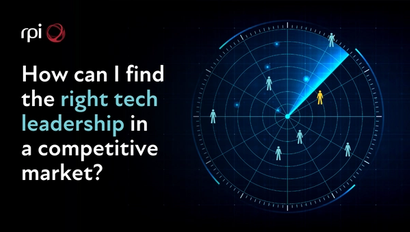A tech solution won’t transform your organisation’s approach to data, any more than a new pair of trainers will make you a marathon runner. To create a culture that understands, uses and prioritises data within your business, you need to do much more than buy in the right software and solutions.
To really differentiate with data in a crowded digital landscape, data needs to become the central tenet of your business. You need to ensure that people can connect with your data, to make informed decisions, explore new data-driven opportunities and create reliable automation.
What, then, should go in to creating an effective data strategy for your business?
High quality data
Gartner defines data quality with four attributes:
- Completeness
- Accuracy
- Availability
- Timeliness
Data must be linked between sources, consistently and accurately expressed, accessible on demand, and current. Anything falling short of those standards could be classed as ‘bad data’. The rule to remember is ‘bad data in, bad data out’.
The costs and consequences of that poor data quality are many, and can be severe. For a start, businesses can find themselves spending 10%-30% of their revenue handling the consequences.
There are also indirect costs. Data is – or should be – the basis on which you make decisions, so poor data means poor decisions. It also means reputational and legal risk. Duplicate and absent information can expose you to reputational damage, if not legal consequences from GDPR.
Because of its lax data discipline, Italian telecom firm TIMwas found guilty in 2020 of excessive data retention, and improper management of consent lists, among other GDPR violations. It was fined €27.8m.
Implementing a tech solution without first addressing data quality is like trying to run an expensive car on the wrong fuel – you won’t just fail to get the results you need, but risk fundamentally damaging your organisation’s trust in your data and the systems that process it.
Robust data governance
The groundwork for high quality data is governance. Unless a business introduces standards, roles, and defined processes for its information handling, data quality will be impossible to maintain.
Stewardship is a useful governing principle. At the top, driving the change and overseeing the shift, a Chief Data Officer (or similar) will be the ultimate data steward. Then, according to the size of the organisation, others can take on responsibility for departmental data, with stewards throughout the business championing the data cause.
That said, it’s important that all staff and team members assume responsibility for data, and understand the purpose of the initiative. Good data governance is first and foremost about building and maintaining an information culture.
Fluent data literacy (from c-suite to new starters)
For that culture to thrive, it requires a common language. Not every member of staff will have a natural grasp of data or its vocabulary, so the language can and should be basic and easy to learn.
All that’s required of most staff is the ability to read, write, and communicate data. A standard, clearly defined language will help maintain data consistency and cleanliness.
More fundamentally, if everyone in the company can understand and interpret data, insights and improvements can come from anywhere. If they can’t, it’s far too easy to miss weaknesses, problems, and opportunities.
The right data source for your business
How and where you store your data will also depend on how your organisation needs to use and access that data. For some, a central source of all data is the best way to ensure that you always have a ‘single version of the truth’ or ‘golden record’. For others, a more democratised approach is more effective, with different departments or teams taking ownership and accountability for their data sets. Whichever option you choose, you need to remember the data quality attributes above, and make sure that the data remains accurate and accessible, wherever and however it is stored.
Data Lake
A data lake is a repository for data that serves as a single source of information. The data is stored in a ‘flat architecture’, without specific structure, and sits in its natural or raw form until needed by an application.
Typically, a data scientist would be the one to use the lake, assisting a business user with access.
The flat structure and raw format allow an organisation to store vast quantities of data in the lake, which makes it an ideal choice for sectors like oil and gas, in which companies generate on average 1.5 terabytes of data per day.
It’s also a secure way to hold data, so those companies and industries who handle sensitive information may find it the best option.
Data warehouse
A data warehouse is also a central storage solution, but in contrast to a data lake, the information within is processed for a specific purpose, and therefore easier to navigate by the data ‘layman’.
That means the data is readable and quickly accessible, enables reporting and analytics, as well as easier segmentation for marketing purposes.
Data Mesh
Data Mesh is an emerging solution that decentralises data storage, and places ownership in the hands of those who use it. It reduces the cost and effort of data transport, and doesn’t require data teams to assist with access. For businesses of a certain size, data mesh can protect the efficiency that data bottlenecks threaten.
The departmental ‘ownership’ of data extends segmentation potential even further, as marketing and sales teams can create 360-degree models for customer behaviour.
For sectors like finance, the decentralisation and instant access of Data Mesh empowers real-time fraud detection through local analysis.
Strong data leadership
As discussed above, data is everybody’s responsibility, but practical realities mean that those with greater experience and aptitude will supervise the processes. The formation of a data strategy and best practice are highly specialised skillsets.
Additionally, the role of Chief Data Officer (or equivalent) involves more than data expertise. It requires a fundamentally commercial mind to remember that data serves the business, and to make all strategic decisions in that context. When it comes to appointing your CDO, the specific blend and emphasis of capabilities will of course depend on the outcomes you hope for.
The combination of data and business nous is rare, especially when combined with the leadership experience that a senior role calls for. The very long and intensive search is something that you’ll almost certainly need assistance with.
A partner like RPI will draw on a vast, global network of candidates, using deep relationships to source talent from around the world, to fit very specific and highly specialist roles.
The right technology for your data objectives
To reiterate, spending money on technology is not a complete strategy. Your data technology is only an enabler.
With that in mind, to determine which solution(s) will fit, you should start by asking several questions:
- Who will need to access and handle data, and how often?
- Will the data be stored centrally? If so, consider a Master Data Management solution to protect the integrity of your data.
- What is the budget and cash flow?
- How much control do you want or need over your data solutions?
- Do you have the resources to maintain the system?
- How quickly do you need to implement the solution?
That’s by no means an exhaustive list, but as a starting point it will guide you to solutions that have the relevant capabilities, so you’re not over- or under-equipped. It will also inform decisions like cloud vs on-premises deployment.
Making the change
Through all your considerations around data strategy and technology, it’s important to remember (and easy to forget) that the whole project is by people, for people.
Technology can support a data culture, but it can’t create one.
Companies need data leaders who can inspire change, not simply impose it, and who can bring to their roles an understanding of data that serves its users.
To find the talent that will make data solutions work for your business, contact people@rpint.com.
![It takes more than technology to create and implement a data strategy. Learn how to foster a strong data culture in your business.]](https://cdn.sanity.io/images/x2j6emyv/production/8bf0f50ed3b07994cad221328695eec99456baa3-1200x680.png?w=1200&h=680&auto=format)


